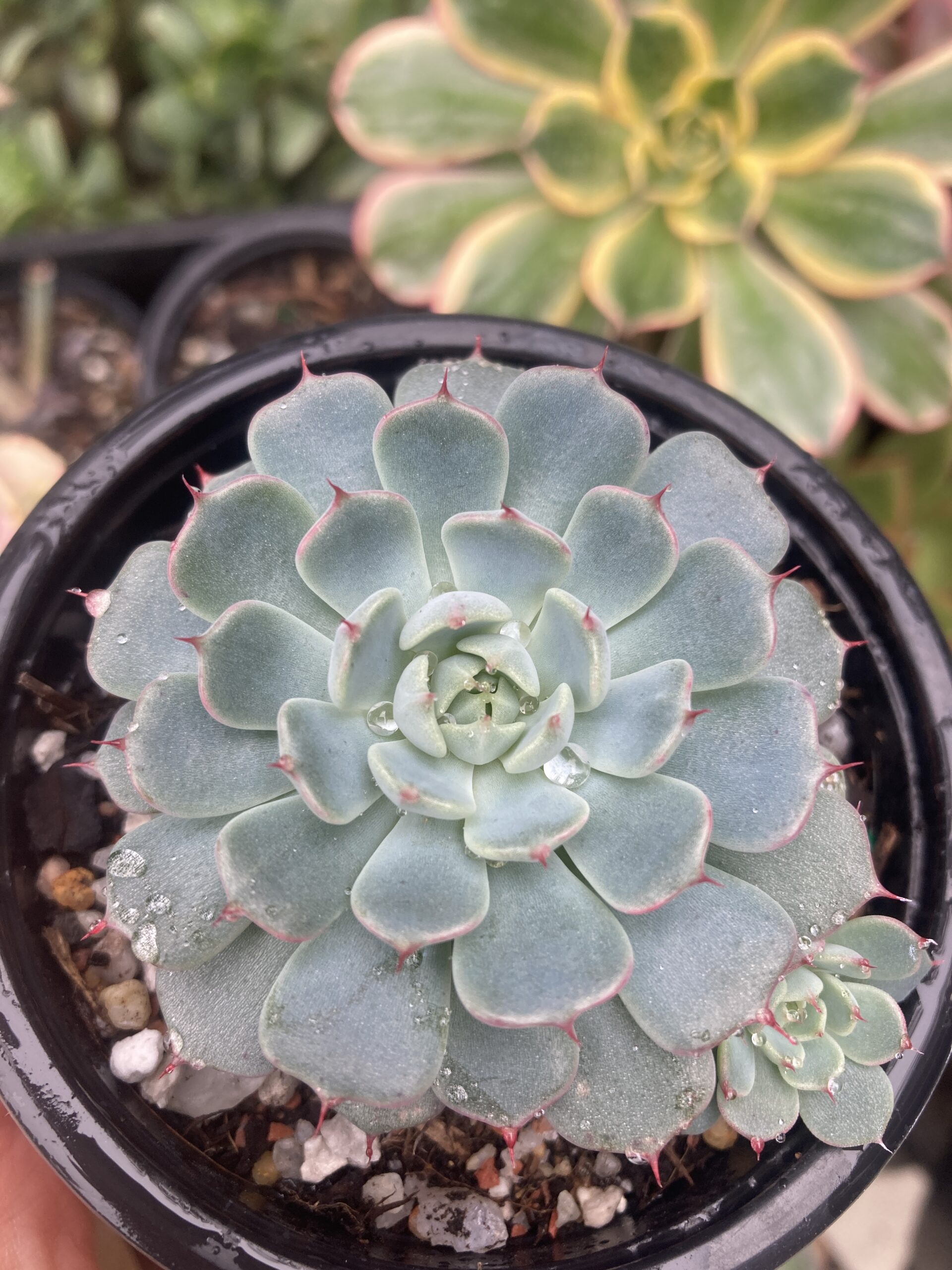Echeveria Vincent Catto is often confused with Echeveria Minima and Echeveria Globulosa (they are believed to be different species and Vincent Catto is not a cultivar or a hybrid of either of these), though the true origins of this plant are rather confusing.
When researching this plant, the information available seems to suggest that Echeveria Vincent Catto is not a hybrid or a cultivar, but indeed a species found in the wild. It is also believed to be now extinct in its natural habitat but lives on in people’s backyards all over the world.
Description
Echeveria Vincent Catto is a very small growing succulent with rosette type arrangement of the leaves. Individual heads only grow to about 4cm (depending on the conditions) in diameter and form clumps that can consist upwards of 20 rosettes.
The leaves are small and blue-ish in colour in the warmer months and can turn anywhere from pink to orange to red in the cold season. While in the growing season the leaves are somewhat spread out a bit in winter they close into a tight ball.
The tips of the leaves are pointy at the end but before this point is formed, either side of the leaf opens up almost to a right angle (see image below). It is my belief this is how you tell Vincent Catto apart from Minima. The leaves are slightly wider at the top on Vincent Catto and more slender on Echeveria Minima.
Echeveria Vincent Catto flowers in winter/spring. The flowers are bunched up on top of a tall stalk with outside petals being orange and inside yellow.
Position & Care
Echeveria Vincent Catto can be a little fussy in the warmer months, especially when the weather is hot and humid. It is best to keep this plant out of hot afternoon sun (in shade or under shade-cloth during extreme heatwaves) and only water when the potting mix has dried up.
Too much rain in summer can rot Vincent Catto, although it does not seem to mind being drenched when the weather is cool or when planted in an elevated position in the ground. It may be worth while keeping Vincent Catto under cover during rainy spells in summer.
Good quality succulent potting mix should be used for this plant. If rainy summer is expected, perlite or pumice can be mixed in to help with drainage.
In the ground, Vincent Catto seems to grow remarkably well, though it needs to be planted in good soil (not too heavy/too loose), on a slope so it can’t get water logged and in a spot where it gets afternoon shade in summer.
Echeveria Vincent Catto is not frost tolerant and will need to be brought indoors/ in a greenhouse in cold climates. It will however tolerate temperatures down to about 1C/33.8F. Once frost start settling on the plant, it can get black burn marks and die.
Propagation
Echeveria Vincent Catto is best propagated from cuttings of offsets or chicks. Patience is key as the offsets need to be big enough and have a stalk to be separated. Only propagate in the growing season, which is spring & summer for this plant. Having said that, spring is best as extremely hot temperatures in summer can kill young plants.
Leaf propagation is possible but can be difficult as it is hard to separate the leaves from the tight rosettes. For a step by step guide on leaf propagation go to this article.
Seed propagation is also a viable method though it is incredibly slow and the success completely depends on the seed being sold. Personally, I would not recommend propagating Vincent Catto by seed unless you are very patient and have a reliable seed seller that can guarantee the seeds are true to form and not ‘contaminated’ by pollen from other plants.
Pests
Echeveria Vincent Catto is susceptible to all the usual succulent pests such as mealy bugs, aphids, snails/slugs, grasshoppers, caterpillars and bigger animals that like to eat succulents (we have a whole article on animals that eat succulents here).
Toxicity
Echeveria Vincent Catto is classed as not toxic/ poisonous to humans, dogs, cats or other pets and livestock. However, it is not recommended to purposefully eat this plant.
Where can I buy it?
Echeveria Vincent Catto used to be quite a rare plant but thanks to tissue culture, it is much more accessible these days. Although it is unlikely you will ever find one in garden centre, online succulent nurseries usually stock this plant.
